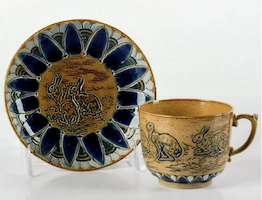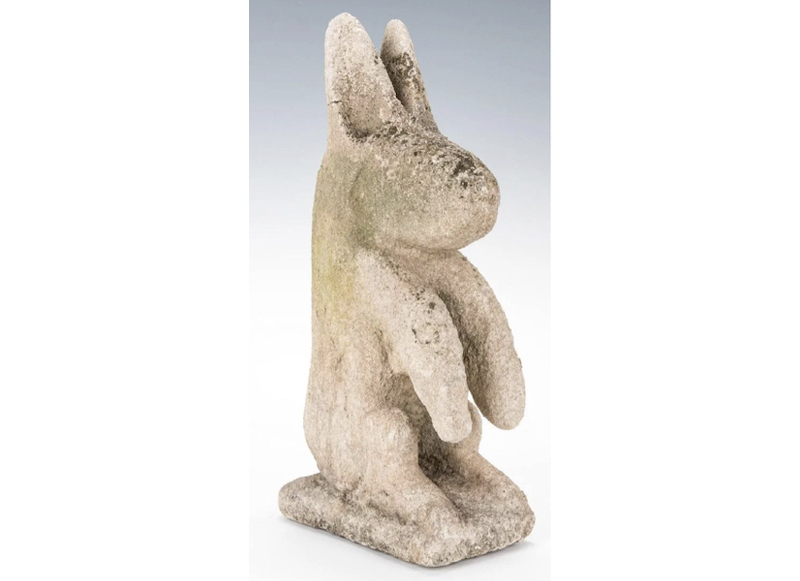
NEW YORK — The Chinese New Year will begin Sunday, January 22. It is the biggest holiday in China, giving its citizens seven days off from work to celebrate. According to the Chinese zodiac, each year in a 12-year cycle is associated with a particular animal sign, and 2023 is the Year of the Rabbit.
The rabbit has long been considered lucky, and the practice of carrying a rabbit’s foot as an amulet or symbol of good luck appears in communities across China, Europe, North and South America and Africa. Chinese culture regards the rabbit as a symbol of hope, peace, long life and prosperity. And, of course, rabbits are cute, so it’s not surprising they are a favorite subject matter for authors and artists alike. Albrecht Durer, a leading artist in the 1500s, was one of the first to portray rabbits in a highly realistic manner, as he does in his watercolor painting titled Young Hare. Rabbits are a common motif in secular and non-secular art alike; depictions range from hunting and farm scenes to serving as symbols of purity.
Works in jade are always coveted, particularly by Chinese collectors, but jades that take the shape of a rabbit typically sell well. Chinese culture features the legend of the Jade Rabbit, who inhabited the moon after an encounter with the Jade Emperor. According to folklore, the emperor disguised himself as a poor old man begging for food. Several animals, including the monkey, the lizard and the jackal gave up their food willingly to the man, but the rabbit, knowing that people could not eat grass, prepared to sacrifice himself. Instead, the emperor revealed his true identity and sent the rabbit to live on the moon for eternity as reward for his selfless act.
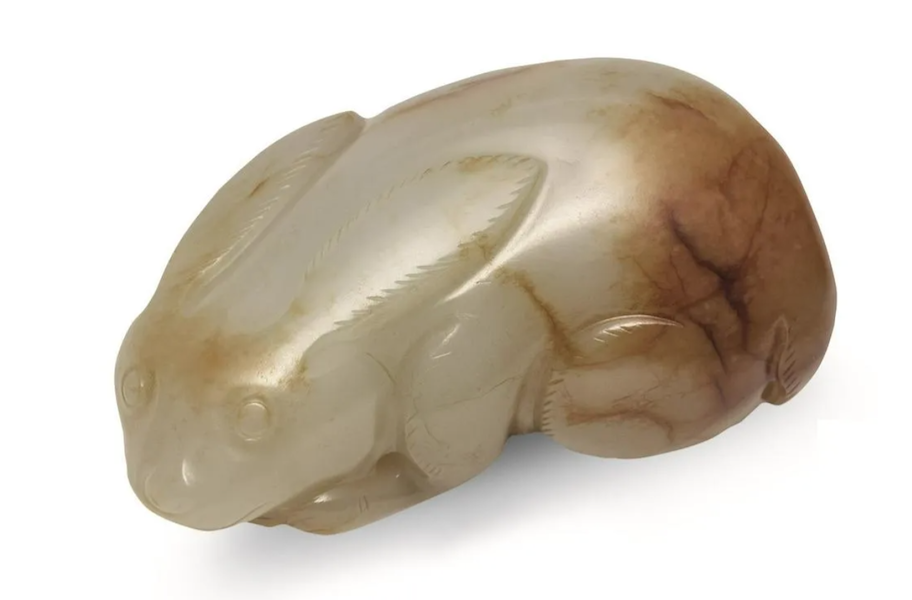
Most jade pieces carved into rabbits are small and convenient for displaying, such as a Song dynasty white jade rabbit that earned SGD $40,000, or about $30,234, in December 2019 at Singapore International Auction Pte Ltd. Standing just under three inches tall, the figure is in a pleasing hue of white with russet brown striations.
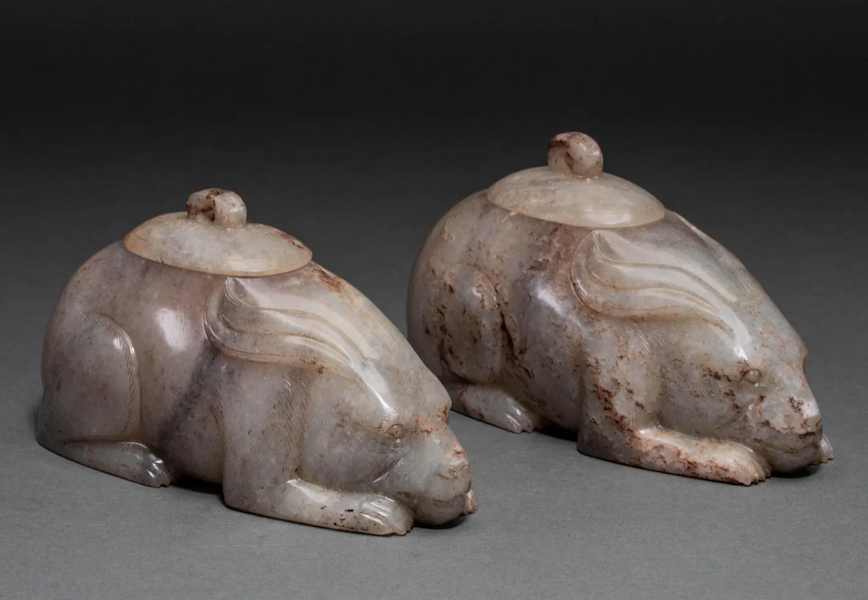
Other small rabbit-shaped pieces, such as netsuke and boxes, are forever in demand. A pair of diminutive Chinese Han dynasty Hetian jade rabbit-form lidded boxes, measuring just under three inches tall, sold for $5,500 plus the buyer’s premium in July 2022 at Fantastic Antique Corp. The russet jade stone is carved simply but well.
Chinese artists used other media besides jade to pay homage to rabbits. A detailed bronze cloisonne enamel rabbit, dating to the Qing dynasty and standing a foot tall, brought $7,000 plus the buyer’s premium in September 2022 at Jubao Hall Auction House.
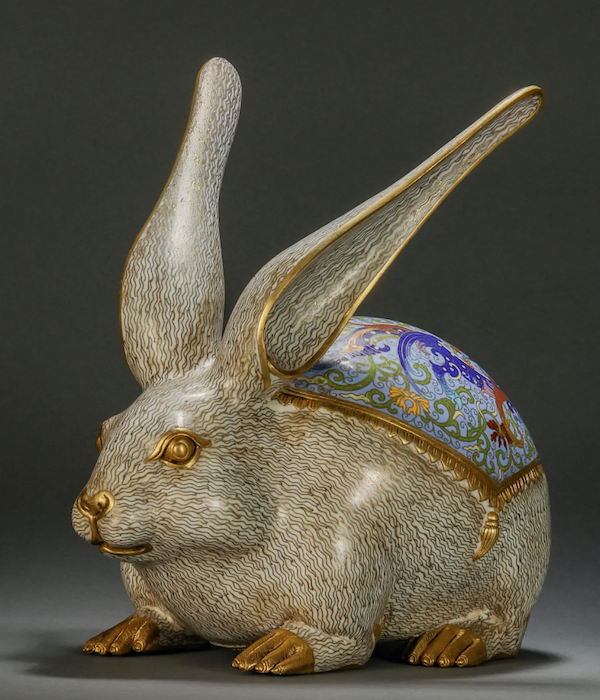
American artists have long been interested in rabbits. The late African American sculptor William Edmondson was fond of the creatures and sculpted them more often than any other animal. A limestone rabbit of his, measuring nearly 17in tall, made $34,000 plus the buyer’s premium in July 2019 at Case Antiques, Inc. Auctions & Appraisals.
Edmonton drew inspiration from African American folklore and mythology, which described the rabbit as a trickster, one who uses cunning and smarts to overcome obstacles. “For enslaved Africans in the United States, these traditional stories kept them connected and gave them hope,” according to the website of the Smithsonian Museum of American Art. With his parents both having been enslaved at one time, Edmondson likely heard tales of this trickster rabbit, as well as Br’er Rabbit, growing up.

A Doulton Lambeth Hannah Barlow cup and saucer set featuring rabbits attained $4,500 plus the buyer’s premium in February 2022. Image courtesy of Lion and Unicorn and LiveAuctioneers.
In England, rabbits are cherished in arts and literature, as evidenced by author Beatrix Potter’s classic books that elevated these animals to main characters, as with Peter Rabbit. English china maker Doulton Lambeth also featured rabbits on its wares, notably in an 1876 design by Hannah Barlow detailed with incised rabbits set against a blue and brown background. A cup and saucer set from this pattern sold for $4,500 plus the buyer’s premium in February 2022 at Lion and Unicorn.
Rabbit images are not just for Easter. They are enjoyed in various forms and interpretations year-round, whether as a jewel-eyed bracelet charm or a wall-filling Hunt Slonem painting of rabbits, rabbits and more rabbits.


